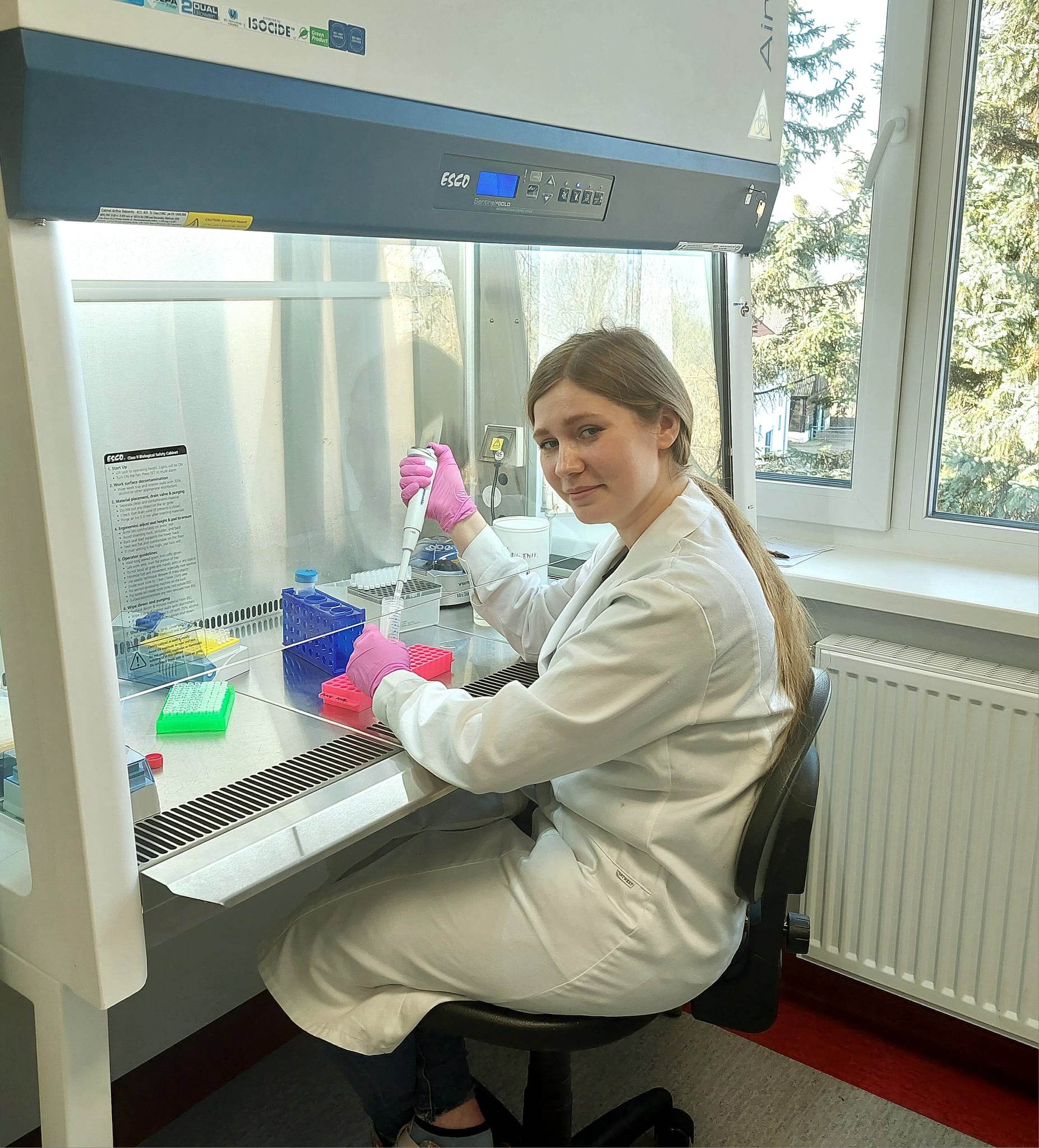1. In vivo methods:
- Methods formulation of biological material collection from wild animals (semen, blood, feaces, tissues, biopsis)
2. In vitro methods:
2.1. Enzymatic isolation and cell culture of:
- epithelium and stromal cells from the endometrium,
- steroidogenic cells from the corpus luteum,
- granulosa cells from the ovarian follicle,
- epithelial cells of blood vessels from the corpus luteum and the endometrium,
2.2. Tissue incubation of:
- the endometrium explants,
- the corpus luteum explants.
3. Analytic methods
3.1. Molecular biology methods
- pro- and anti-apoptotic factor (TNFα, IFNγ, IL-1α, Il-6, FasL, BCL2, BAX, Caspase3, Caspase8) expression and their receptors,
- enzymes of steroidogenic pathway (3β-HSD, StAR, CYTp450)expression,
- enzymes of arachidonic acid metabolism pathway expression:
- leukotrienes pathway (5-LOX) and their receptors,
- prostaglandins pathway (PTGS-2, PGES, PGFS, 9KPGR, AKR1B5),
- oxytocin and their receptors expression
3.2. Radioimmunoassay (RIA) of hormone:
- protein hormones (LH, PRL) and their receptors (LH/hCG) and cytokines (IL-1β, IL-6, TNF-α),
- steroidogenic hormones (P4, A4, T, E1, E2, cortisol, prostaglandins and metabolite of PGF2α- PGFM,
3.3. Immunoenzymatic (ELISA) method:
- protein hormones (LH) and peptide hormones (oksitocin, endothelin),
- steroidogenic hormones (P4, T4, E2),
- prostaglandins (PGE2, PGFF2α) and metabolit of PGF2α- PGFM,
3.4. Immunosytochemistry and immunohistochemistrycal localization of:
- arachidonic acid pathway enzymes (PTGS-2, PGES, PGFS, AKR1B5, 5-LO),
- cytokines and their receptors (TNF-α, IL-1α, IL-1β and others),
- enzymes of cholesterol pathway (P450SCC, 3β-HSD, aromatase),
3.5. High-performance liquid chromatography (HPLC):
- steroidogenic hormones in biological material,
- arachidonic acid pathway enzymes.



